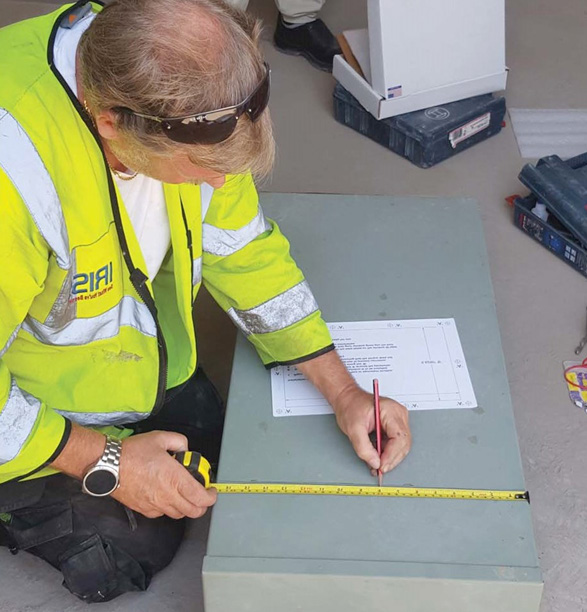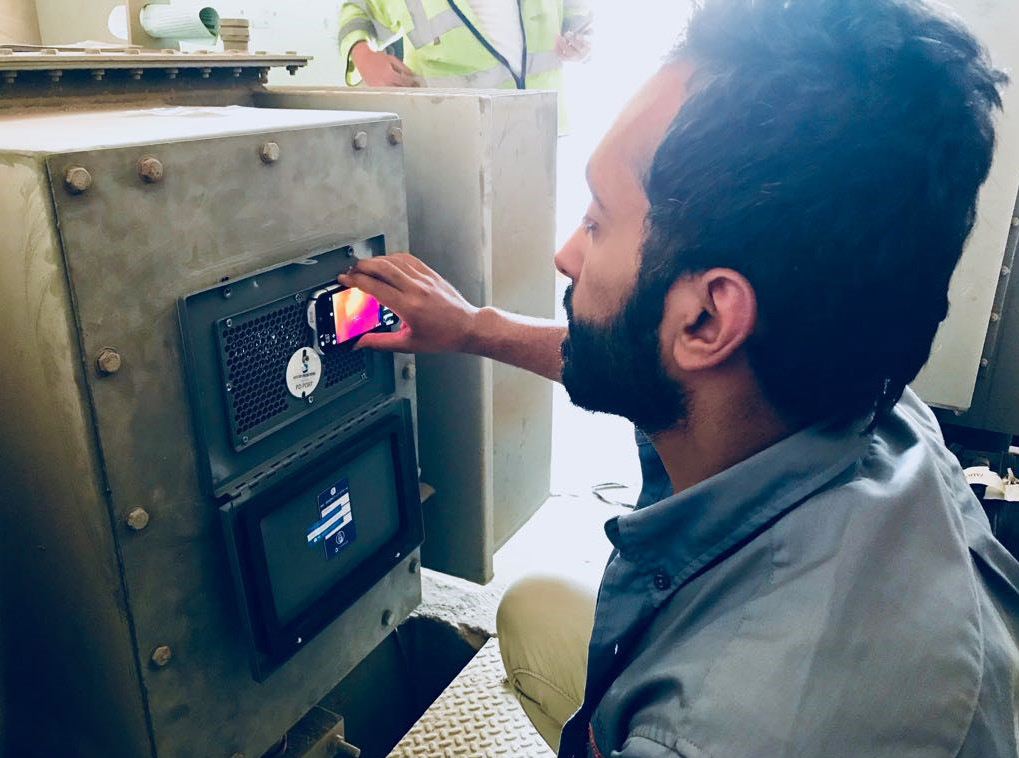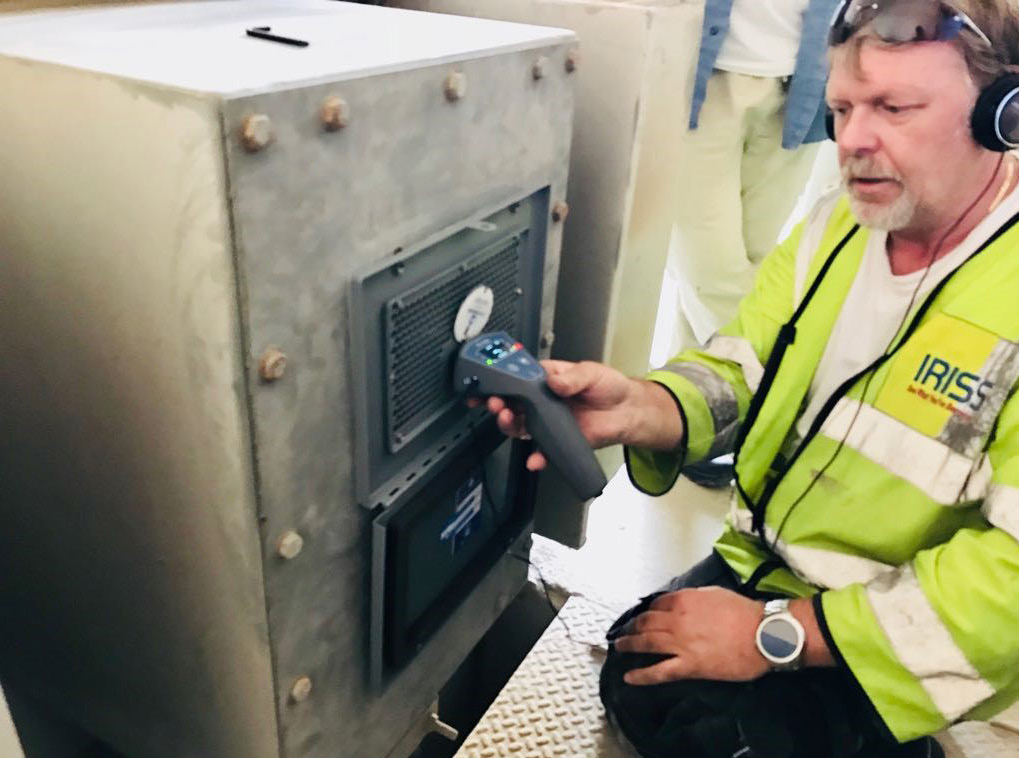Ensuring Reliable Infrared and Ultrasound Electrical Inspections in Extreme Saudi Arabian Conditions
In this article:
Executive Summary: Reliable Inspections with Infrared and Ultrasound
Dammam, Saudi Arabia, experiences some of the most extreme environmental conditions on Earth, with scorching temperatures exceeding 101°F (38°C) for months at a time, high humidity, and frequent dust storms. These conditions put immense strain on aging electrical infrastructure, particularly medium-voltage switchgear and transformers.
To mitigate these risks and improve electrical reliability, IRISS partner EEIC deployed CAP-ENV-12-PD infrared and ultrasound inspection systems on Saudi Electricity Company’s (SEC) 13.8 kV utility equipment. These Electrical Maintenance Safety Devices (EMSDs) enable safer, more efficient condition-based monitoring, helping detect loose connections, overheating, and partial discharge (PD) before failures occur. The project was deemed a success, with plans to expand installations across SEC’s asset fleet.
Challenge: Harsh Climates and Aging Electrical Infrastructure
Saudi Arabia’s extreme climate presents unique challenges for utility infrastructure:
- Harsh Environmental Conditions – Prolonged high temperatures, intense humidity, and airborne dust particles accelerate equipment degradation.
- Aging Electrical Equipment – Much of the region’s utility infrastructure is over 40 years old, increasing the risk of failures and arc flash incidents.
- Inspection Limitations – Traditional inspection methods require opening energized panels, exposing personnel to hazardous conditions and increasing the likelihood of unplanned downtime.
Recognizing the need for a safer, more reliable inspection process, Saudi Electricity Company (SEC) partnered with IRISS and EEIC to implement a proactive maintenance strategy.
Solution: Condition-Based Monitoring with CAP-ENV-12-PD
To improve electrical safety and reliability, ten CAP-ENV-12-PD infrared and ultrasound inspection systems were installed on SEC’s 13.8 kV utility equipment. These EMSDs were custom-engineered to withstand Saudi Arabia’s extreme climate while enabling non-intrusive condition-based monitoring.
Key Features of the IRISS Solution:
Dual-Technology Inspections – Infrared (IR) for thermal issues and ultrasound for detecting partial discharge (arcing, tracking, corona).
Ruggedized for Harsh Conditions – Stainless steel IP67-rated (NEMA 6) enclosures protect against dust, sand, and humidity.
Field-Replaceable Optics – The polymer viewing window can be easily replaced from the front of the unit, reducing maintenance costs.
Smart Data Collection – E-Sentry asset tags allow personnel to log inspection data via a smartphone app, syncing information to a cloud database for remote monitoring.
IRISS UK specialist Paul Goodbody traveled to Dammam to oversee the installation and train EEIC and SEC personnel on maximizing the benefits of the new system.
Outcome: Improved Safety and Electrical Reliability
Following the successful pilot installation, SEC engineers now conduct safer, non-intrusive electrical inspections with improved accuracy and efficiency.
Key Results:
- Reduced Downtime – Early fault detection prevents unexpected failures, improving grid reliability.
- Enhanced Safety – Inspections are performed without opening energized panels, minimizing arc flash risk.
- Improved Asset Management – Cloud-based monitoring provides real-time insights for better decision-making.
- Scalable Implementation – SEC plans to expand IRISS solutions across its entire fleet of utility assets.
Ahmad Mohammad Mosaad, Distribution Engineer at Saudi Electricity Company, called the project “a total success that we intend to duplicate across our fleet of assets.”
Key Takeaways
- Aging electrical infrastructure in extreme climates requires proactive maintenance strategies.
- IRISS CAP-ENV-12-PD solutions enable safe, reliable infrared & ultrasound inspections.
- Smart data integration enhances predictive maintenance and long-term asset management.
- Saudi Electricity Company plans to scale this technology across its utility network.
Want to future-proof your electrical infrastructure? Contact IRISS today to explore customized inspection solutions for your industry.

Figure 1 Paul Goodbody of IRISS demonstrates how to utilize an IR window template.

Figure 2 SEC engineer performs an infrared inspection on a transformer cable
compartment using a CAT S60 phone with a built-in IR camera and a CAP-ENV-12-
PD inspection window.

Figure 3 Paul Goodbody of IRISS listens to the airborne ultrasound signature on the
MV side of a transformer using a SONUS PD handheld partial discharge detector.
Related articles

Need help? Want more information?
No matter the size of your organization, we’ll work with you to create the perfect plan that aligns with your goals and budget. Explore how IRISS solutions can transform your operations by providing unparalleled features and benefits. Contact us today to get started with a personalized quote!